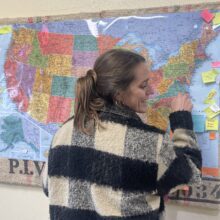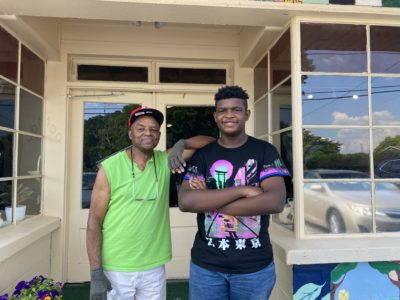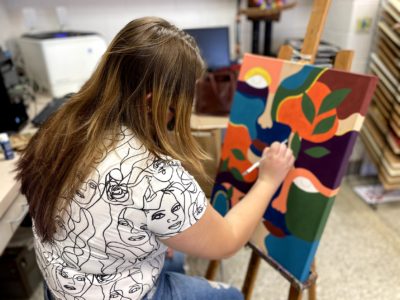|
|
“Hellooo, Soloooo!” yells a group of students in the Trenton Elementary School gym. In reply, the man on stage says “Bonjour!” The room is full of the frenetic energy found uniquely in elementary school students, like that of a soft drink that’s been shook up, or a confetti cannon just before it’s about to pop.
This is Souleymane “Solo” Sana’s first stop during a two-day trip to the area to visit four elementary schools. But it’s not his first performance in Jones County.
Solo is an accomplished West African dancer who travels around the world to teach dance and song, bringing the cultural traditions of Mali to places like eastern North Carolina.
How did Solo end up on this excursion to Jones County? Responsible for this special performance is the Atlantic Dance Theater (ADT) in neighboring Craven County.
ADT began in 1985 under the direction of executive director Elizabeth Pope. The organization is dedicated to providing quality dance events that build young lives, while enriching local culture and supporting a vibrant arts community.
The Atlantic Dance Theater
Since its inception, ADT has taken on different forms. The organization started by presenting a local concert series. During the ’90s, it took shape as a service organization exposing dance to the community through general performances, classes for dance students, weeklong dance residencies in schools and projects reaching underserved groups.
During this time, ADT worked with the Department of Public Instruction’s dance curriculum concepts and was able to hire a certified dance instructor to help lead dance programs with an emphasis on student participation. Some of these performances led to long-lasting relationships and flourishing new art programs.
One of these took form at J.T. Barber Elementary School in New Bern. The school’s then-visual arts educator, Penny King, contacted Pope for help with a collaborative visual art and dance program, where students analyzed paintings and interpreted them with modern dance.
This became known as “The Masters” program, and it lasted for 10 years. It was awarded the Governor’s Programs of Excellence in Education.
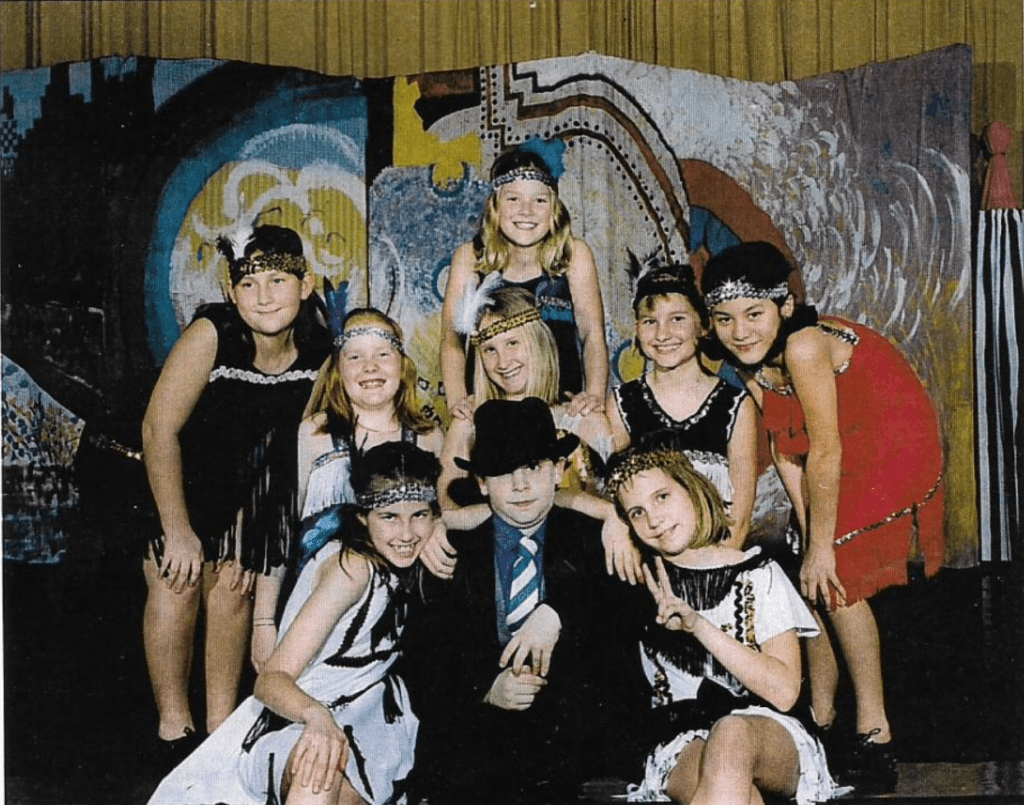
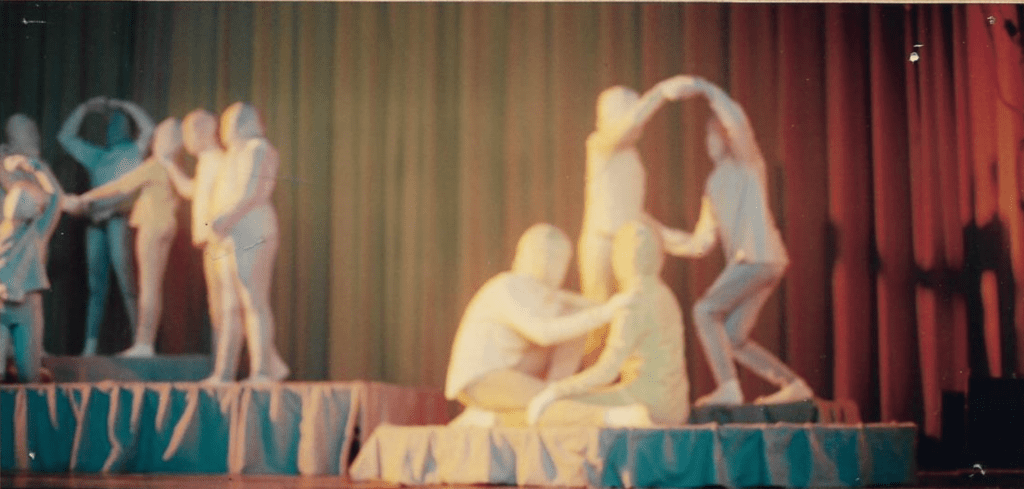
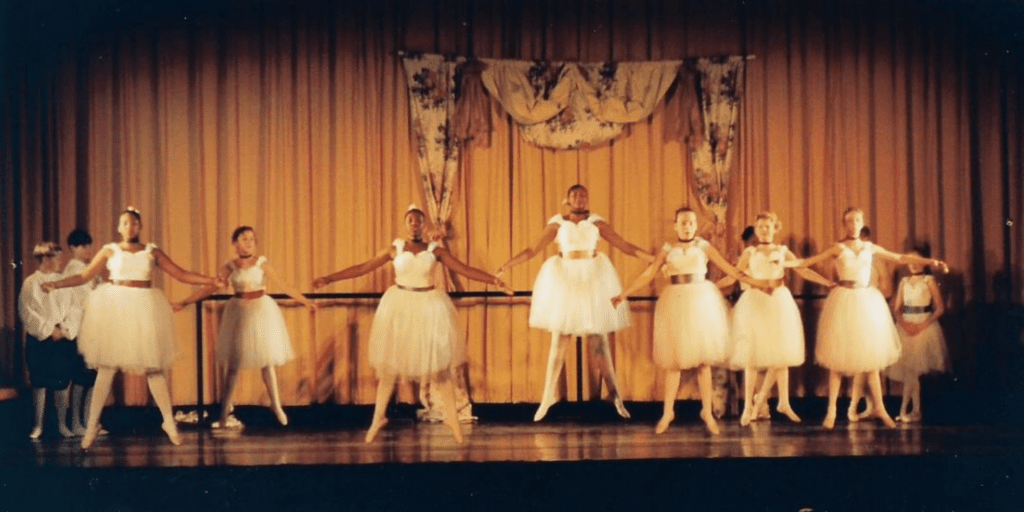
“The most striking aspect of the program was the degree of sophisticated analysis the students did of the painting and choreographic process,” Pope said. “In performance, the students were fully absorbed in conveying the meaning or message of each work.”
ADT took a 10-year hiatus in the 2000s. When they regrouped, the focus remained the same: bringing dance into communities and supporting youth.
At the center of ADT remains its executive director, Elizabeth Pope.
“The heart and soul of the organization has been Elizabeth Pope. Her passion and love for dance has born this into existence. And it’s her baby, but it’s become a lot of people’s baby. It’s become everyone’s baby, and she shares that with us.”
Joan Taylor, artistic director at ADT
Jones County has one of the smallest populations in the state, at just over 9,000 on July 1, 2020. This year, due to funding and teacher vacancies, only music is offered in the district’s elementary schools.
Dance is one of the least available arts in public education. Outside groups like ADT sponsoring this performance is a way to make up for the lack of formal classes in schools.
Joan Taylor is the artistic director for ADT and has taught dance for 30 years. She believes the arts are essential in school because they complement comprehension.
“The world is tactile,” she said, “the world is movement.”
“Any way that you can make what they’re learning come to life for them. By manipulating clay, or moving their body or hearing notes, it is all part of the whole world.”
Joan Taylor, artistic director at ADT.
West African dance in Jones County
“In Mali, West Africa, we dance everyday,” Solo tells the crowd of students before they jump to their feet. “It’s my turn to twist my body for you all!”
Behind Solo are drummers Teli Shabu and Olu Tosh, who create the beat for Solo’s movement. Shabu lives in Durham and is originally from Liberia. He met Solo over seven years ago at the Atlanta African Dance Festival and learned he comes to North Carolina for performances. He is the mentor of Tosh, so they all team up now when they can.
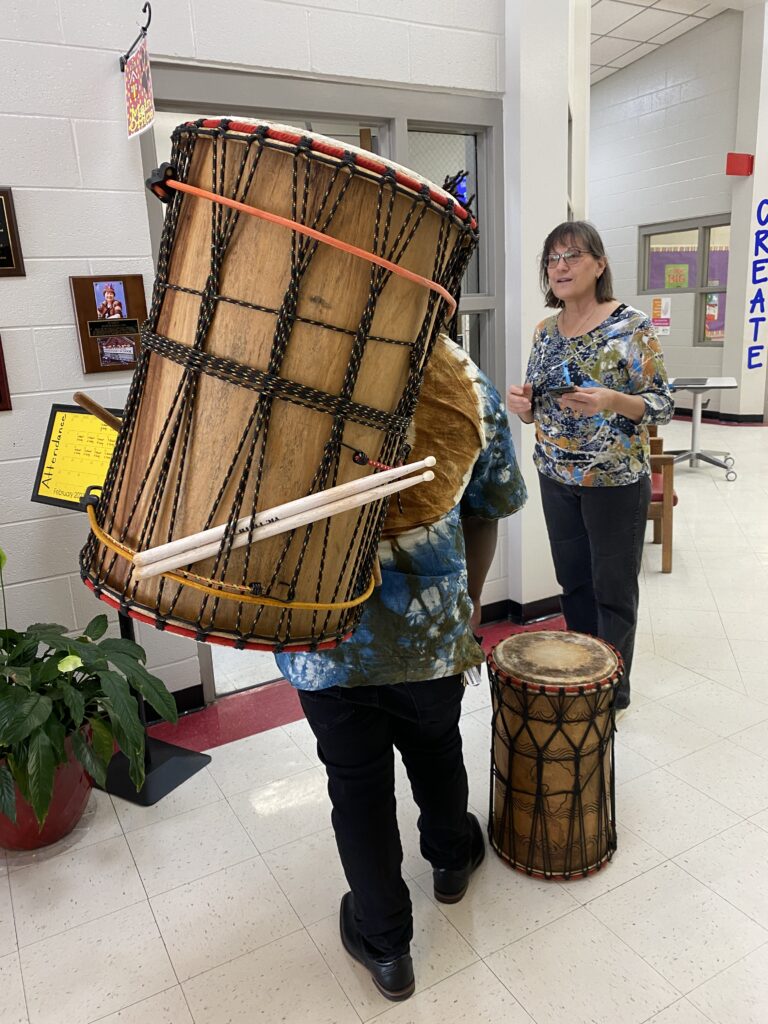

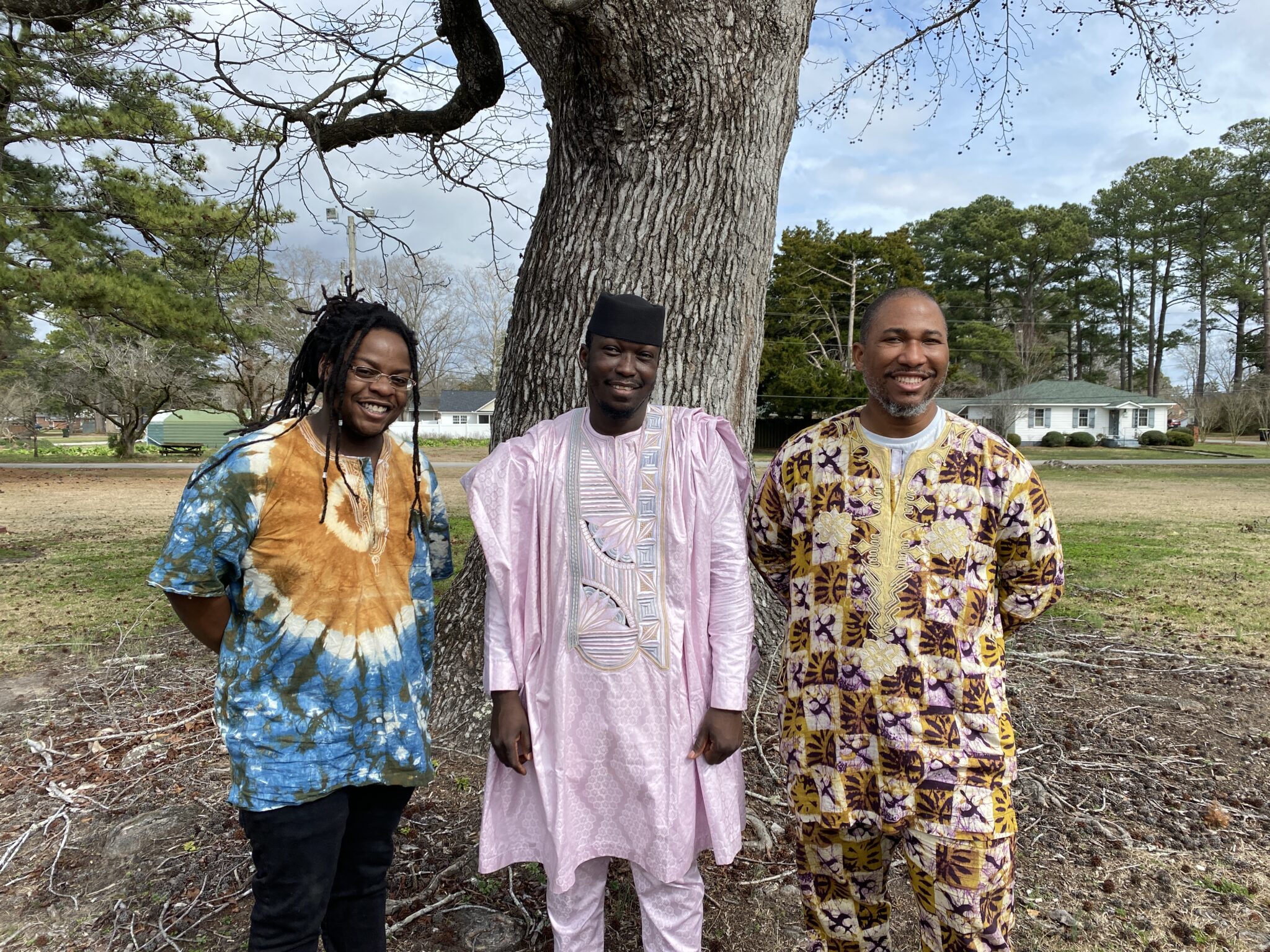
Students are hearing and seeing four different types of drums with Shabu and Tosh: the djembe, doun doun, sangban, and kinkene. The audience is also seeing traditional African clothing as well as movement.
Solo gets the crowd to their feet and starts with warm ups that have students squealing and laughing. They move their shoulders, jump up and down, mimicking Solo as the drums set their tempo. Students learn about the drums, listening for the differences in sound from Shabu and Tosh. After learning a dance with Solo and performing together, the students’ teachers are beckoned to the stage. This gets the biggest cheer of the day.
Solo splits his time between teaching and performing in the United States and running Kono Gnaga, his nongovernmental organization in Mali. Kono Gnaga in the Bambara language means “bird’s nest.” Solo started this local organization to preserve the rich heritage of traditional West African music and dance, piece by piece.
He is currently working with five different schools in Bamako, Mali, to teach dance and music to students so they know “their own culture and where they come from.”
Exposure to dance and culture is the goal of this program, for Solo as well as the Atlantic Dance Theater. Solo said Kono Gnaga’s mission is not only to preserve traditional dance and music, but to keep it alive for generations to come. The Atlantic Dance Theater seems to be doing the same thing for its region, one school performance at a time.
